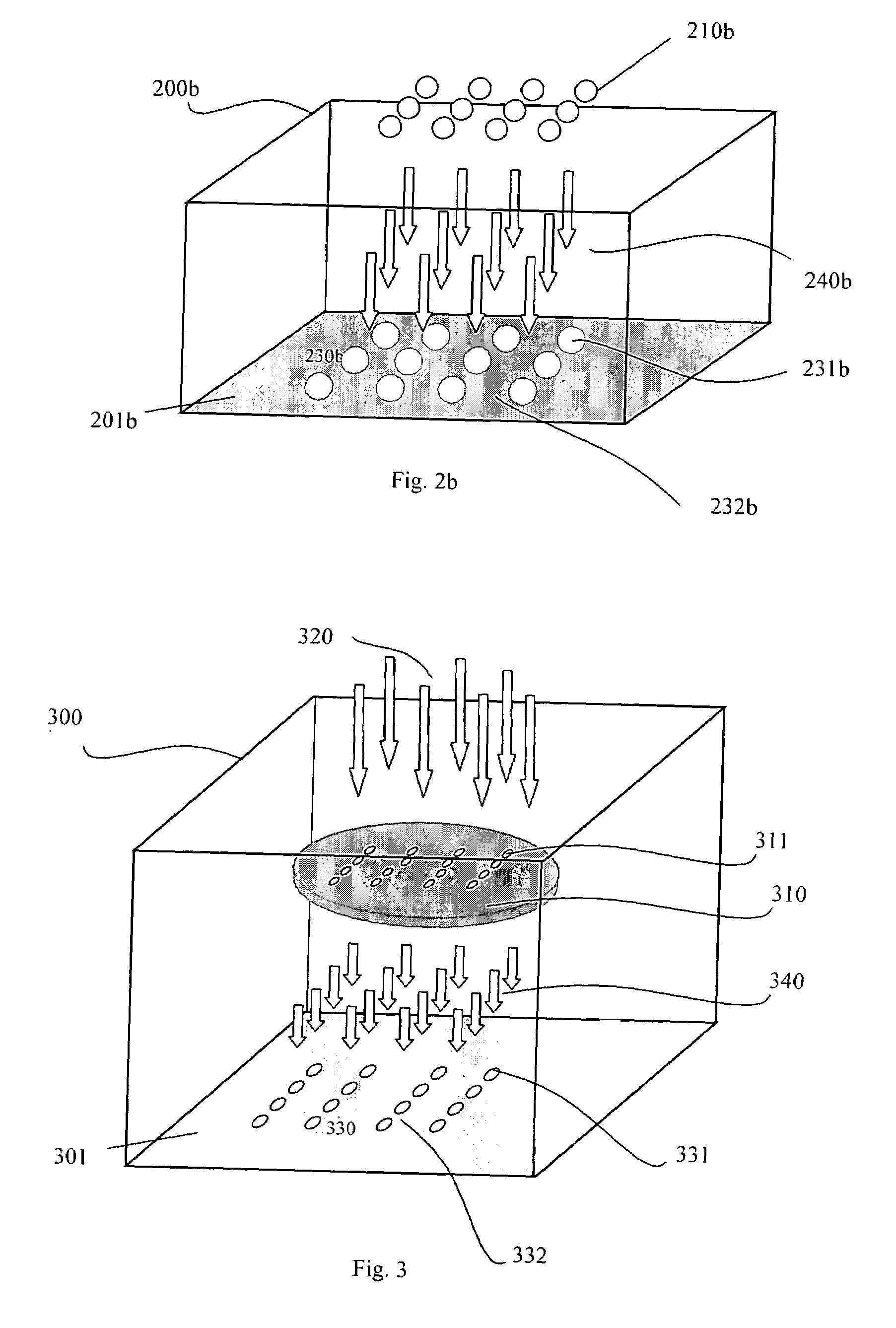Method for guiding aquatic crustaceans by utilizing their biological tendency responding to bright and dark contrast
- Summary
- Abstract
- Description
- Claims
- Application Information
AI Technical Summary
Benefits of technology
Problems solved by technology
Method used
Image
Examples
embodiment 1
[0045]In embodiment 1, see FIG. 1, strip-like dark colored figures, constructed with dark paint or adhesive tape, are combined into a grid-like pattern 110 deployed onto a predetermined place 130 at the bottom 101 of the container 100. The deep-colored regions 132 and the un-painted region 131 at the predetermined place 130 respectively construct the aforesaid second brightness sub-areas and the aforesaid first brightness sub-areas, jointly these sub-areas constituting the bright and dark contrast under the illuminating source 120.
embodiment 2
[0046]In embodiment 2, see FIG. 2a, light-emitters 210a arranged into an array is the direct origin of the bright and dark contrast. The emitter 210a can be a LED, a fluorescent light bulb, an incandescent light bulb or any of other light sources. A LED is preferred here because it is economical and durable. However, the fluorescent light bulb is also preferred considering its low price and availability. The emitter 210a's array is placed at the bottom 201a of the container 200a. And the predetermined place 230a can thus be distinguished into several less illuminated sub-areas 232a, intended to be the second brightness areas, and several illuminated sub-areas 231a, intended to be the first brightness area. The emitters glow persistently or alternatively and their brightness is constant or changeable. In this embodiment, a plurality of individual LED glowing persistently is preferred because of its easy installation and management.
[0047]In embodiment 3, see FIG. 2b, light-emitters 21...
embodiment 4
[0048]In embodiment 4, see FIG. 3, a perforated filter plate 310 with 100% light transparency at its perforations 311 and 0% light transparency at the rest of the plate surrounding perforations 311 is adopted to sift the illuminating light 320. Several light columns 340 are formed and therefore the filter plate produces simultaneously several illuminated sub-areas 331, intended to be the first brightness sub-areas, and the under illuminated sub-areas 332, intended to be the second brightness sub-areas. Both sub-areas jointly constitute the effect of bright and dark contrast at and above the predetermined area 330 on bottom 301 of container 300.
[0049]The filter plate 310 can be an opaque round plate of PVC-like material constructed as a horizontal light filter, but its shape, material and position angle respectively are not limited to be round, PVC and horizontal. Other shapes, materials and / or position suitable for generating intended effects are usable. Shape of the opening 311 is ...
PUM
 Login to View More
Login to View More Abstract
Description
Claims
Application Information
 Login to View More
Login to View More - R&D
- Intellectual Property
- Life Sciences
- Materials
- Tech Scout
- Unparalleled Data Quality
- Higher Quality Content
- 60% Fewer Hallucinations
Browse by: Latest US Patents, China's latest patents, Technical Efficacy Thesaurus, Application Domain, Technology Topic, Popular Technical Reports.
© 2025 PatSnap. All rights reserved.Legal|Privacy policy|Modern Slavery Act Transparency Statement|Sitemap|About US| Contact US: help@patsnap.com



